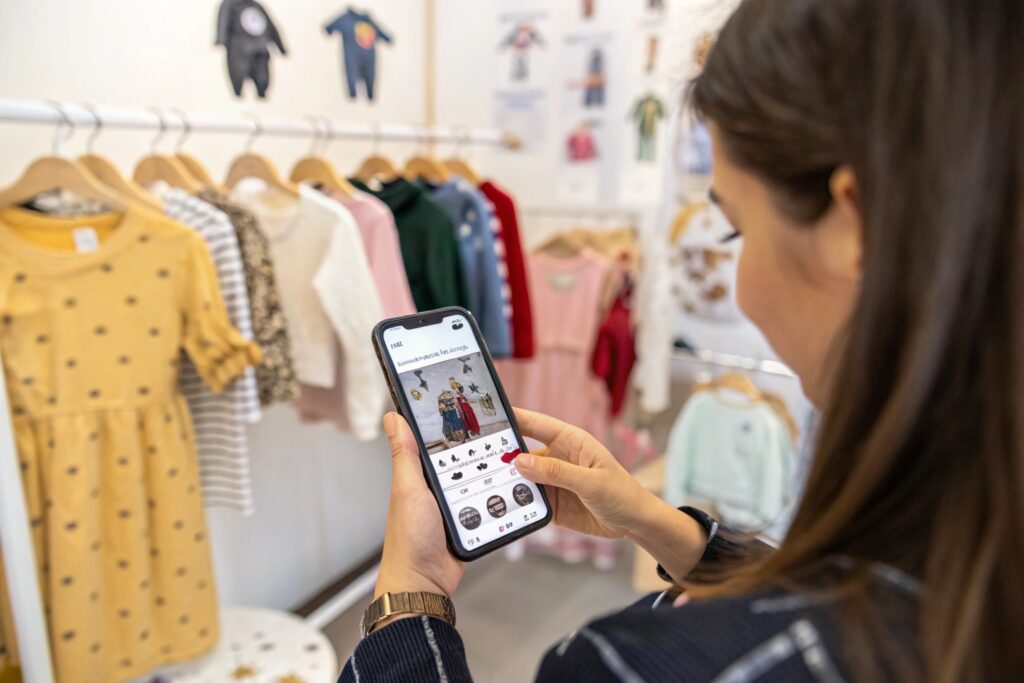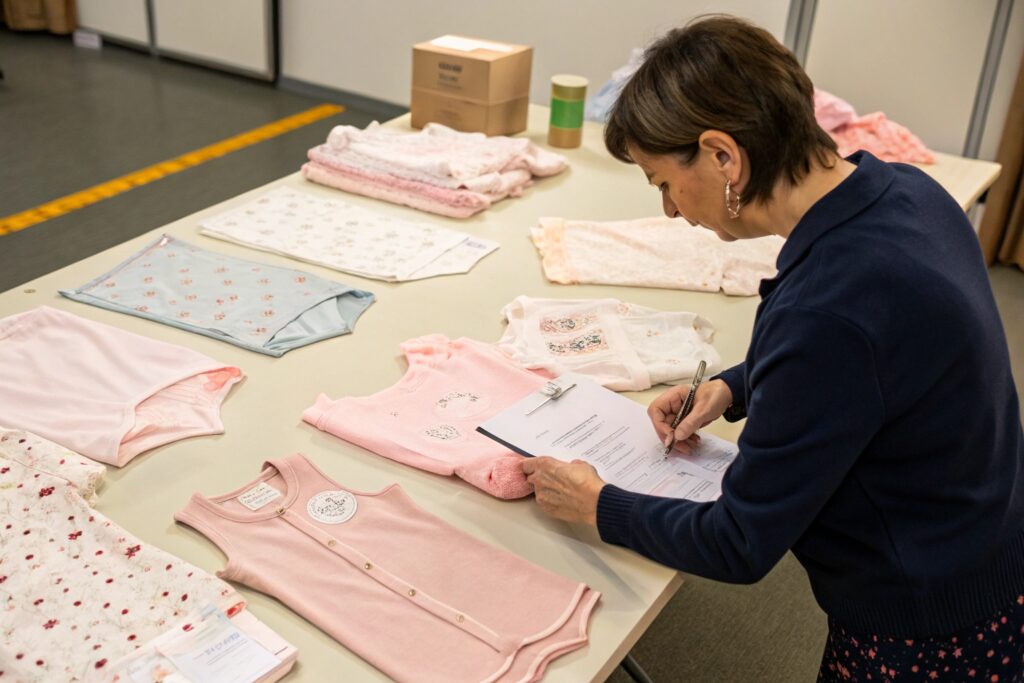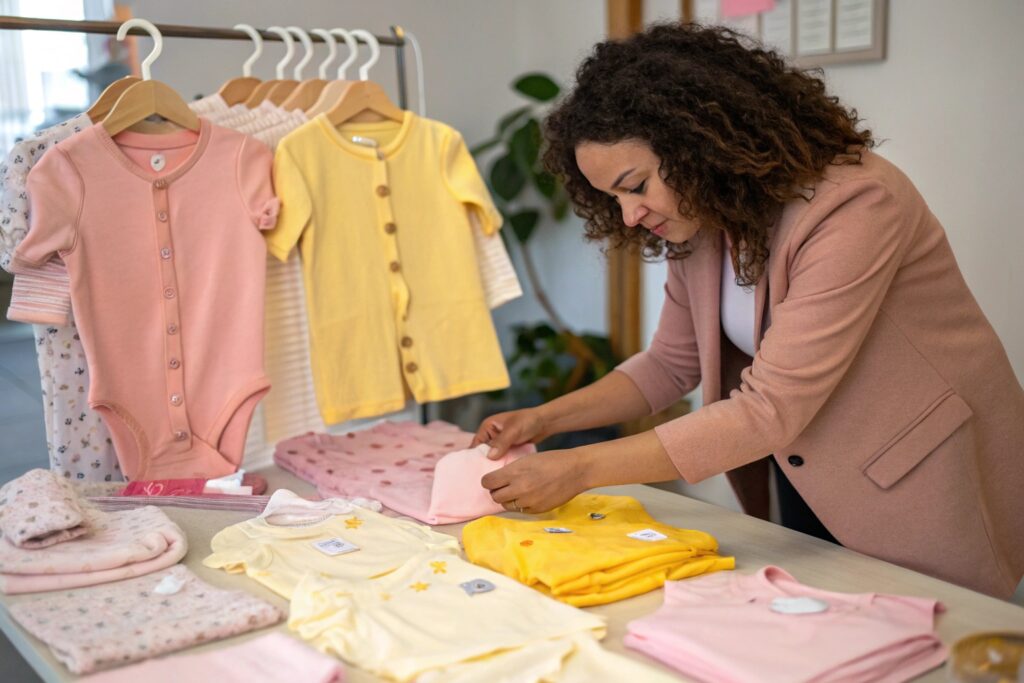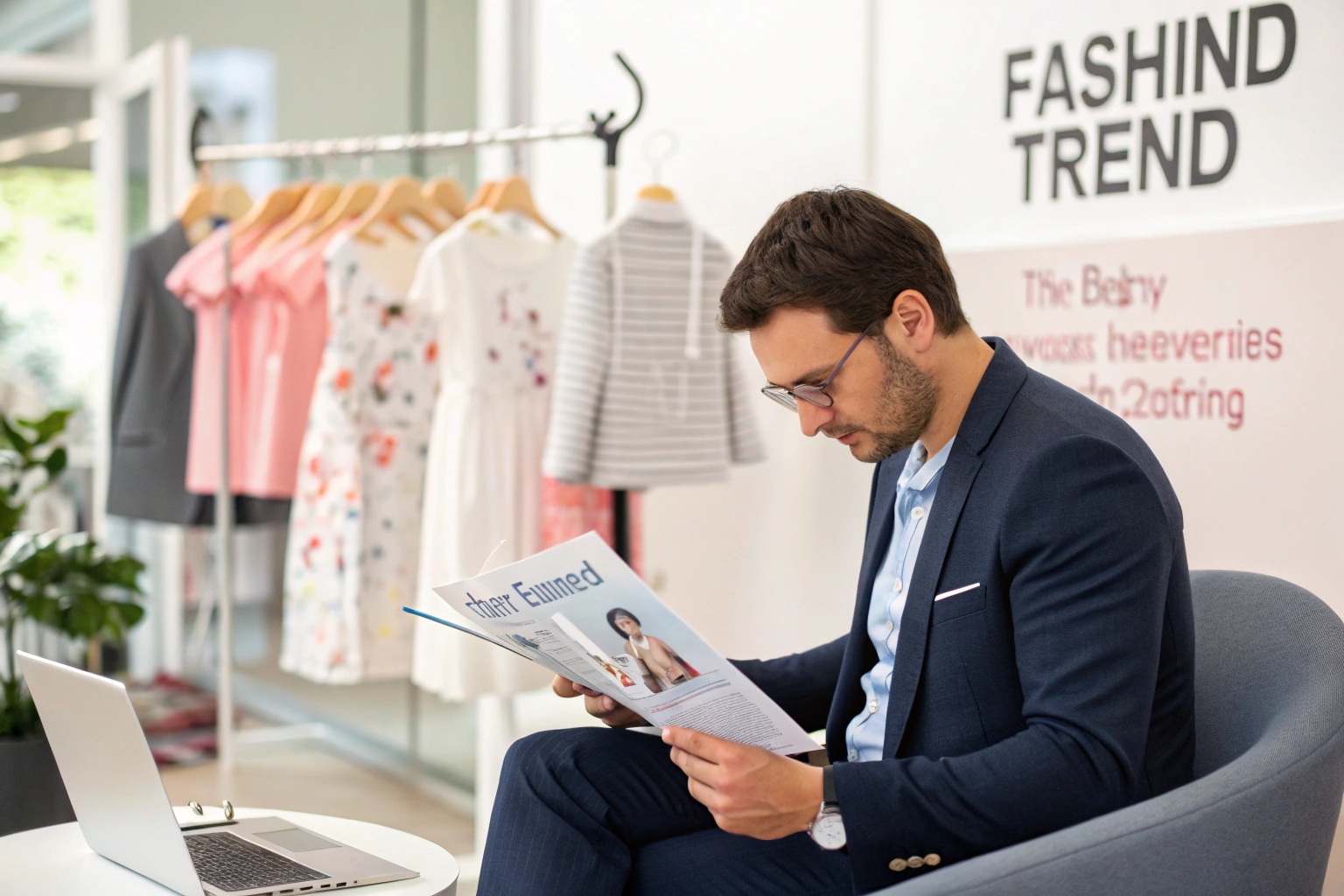Kidswear changes fast—one minute it’s all neutral tones, the next it’s neon dinosaurs. But keeping up without losing your brand identity or budget? That’s the real challenge.
To try new kidswear trends successfully, brands should follow reliable sources, test small batches, mix trend with basics, and choose popular fabrics and seasonal colors.
Here’s how I experiment with new trends in baby and kidswear—without hurting sell-through, wasting stock, or confusing loyal customers.
Where to Find Emerging Trends in Kids’ Fashion?
Following kidswear trends is tricky—parents don’t always follow runway fashion, and children can’t ask for what’s “in.”
To find emerging kidswear trends, monitor kids’ lifestyle influencers, babywear trade shows, Pinterest, global fashion reports, and top-selling items from key retailers.

How do I stay ahead of the curve without chasing fads?
I use a mix of sources. Here’s where I look:
- Pinterest & Instagram: Parents post what they buy. Great for spotting micro-trends.
- Trade shows: Pitti Bimbo, Playtime Paris, and Ciff Kids showcase upcoming styles.
- WGSN & Fashion Snoops: Professional reports highlight key themes and colors.
- Retail scanning: I check Zara Kids, H&M Baby, and smaller DTC brands weekly.
- Mom influencers: Especially those posting on TikTok or reels—real-time market testing.
A trend I saw early this year? Nature-themed embroidery on organic cotton—leaves, moons, clouds, in earthy tones.
Should I follow adult fashion to predict kidswear trends?
Only in part. Some ideas trickle down, like pastel palettes or utility pockets. But not all trends work for babies. I’ve learned to adapt adult trends into kid-friendly versions—so instead of a full leather jacket, maybe it’s a quilted soft version in warm caramel.
How to Test New Styles Without Big Risk?
Trying new ideas is exciting—but if the trend flops, you’re left with stock that won’t move. That’s where smart sampling and testing come in.
To test new styles safely, start with small runs, offer limited edition capsules, use preorder models, and track customer feedback closely.

What are the best ways to try something new without overproducing?
Here’s what’s worked for me:
- Mini Capsule Drops: I release 3–4 trend-based styles as a limited run, separate from the main collection. Scarcity increases urgency.
- Preorder Trials: I put designs on the site or social media and open orders for 2 weeks. If 200 people buy, I produce that number.
- Partner with influencers: Send samples to micro-influencers and see how their followers react.
- Test in one market: Launch new styles only in a smaller sales channel—like Etsy, pop-up shops, or direct email lists.
Here’s a comparison of risk levels:
| Test Method | Investment | Time to Launch | Buyer Feedback |
|---|---|---|---|
| Small Batch (300 pcs) | Medium | 4–6 weeks | Moderate |
| Preorder Model | Low | 2–3 weeks | High |
| Capsule Collection | High | 6–8 weeks | High |
What if a trend fails?
I always build backup plans—like offering bundle discounts, turning slow-sellers into gifts-with-purchase, or repositioning items as basics. A trend isn’t a loss if you learn something from it.
Mixing Trendy Looks with Timeless Kidswear Basics?
Trends attract attention. Basics sell in volume. The real power lies in combining the two—so your collection feels fresh but safe.
Mixing trend with timeless babywear means blending updated details—like colors, prints, or silhouettes—into reliable, best-selling garment structures.

How do I decide which basics to tweak and which to leave alone?
I start with best-sellers—like ribbed onesies or footed sleepsuits—and experiment with:
- New seasonal prints (stars, forest animals, watercolor clouds)
- Modern colors (sage green, rust, soft terracotta)
- Small trims (contrast piping, novelty buttons, embroidery)
For example, instead of launching a completely new jumpsuit shape, I add a trending waffle fabric or minimalist graphic to a proven design.
What’s a good trend-to-basic ratio for a balanced babywear collection?
A rule that works for me:
- 70% Basics – solid-color bodysuits, everyday pants, neutral tones
- 20% Trend-Adapted Basics – same shapes, updated details
- 10% Trend-Forward Pieces – bold colors, statement pieces
This gives buyers something new—without overwhelming them or risking inventory waste.
What Fabrics and Colors Are Trending This Season?
Parents are more aware of fabric quality than ever before. So staying on-trend isn’t just about prints—it’s also about feel, function, and tone.
Popular babywear trends this season include waffle knits, ribbed textures, earthy tones, soft clay colors, and certified natural fabrics like organic cotton and bamboo.

What textures and fabric types are brands focusing on now?
I’ve seen a big shift toward tactile, cozy fabrics. These are the top materials I’m seeing:
- Waffle Knit: Lightweight, breathable, textured—great for rompers and loungewear.
- Ribbed Cotton: Stretchy and soft, adds visual depth.
- Brushed French Terry: Cozy for fall/winter.
- TENCEL™ and Bamboo Blends: Moisture-wicking and gentle on baby skin.
These fabrics also work well with minimalist patterns—giving even basics a modern, elevated look.
What color trends are parents responding to?
While pastels are still strong, there’s a shift toward warmer, earthier shades. Current favorites:
- Sage Green
- Sand
- Dusty Rose
- Oatmeal
- Clay
- Warm Taupe
I also keep an eye on Pantone’s seasonal forecasts and match them to babywear-friendly versions. Parents love harmony and softness—harsh or overly bright tones are rarely top sellers in newborn lines.
Conclusion
Trying trends in kidswear doesn’t mean betting the business. With the right tools—market research, limited testing, timeless pairings, and fresh fabric choices—you can stay current without compromising trust or quality.










